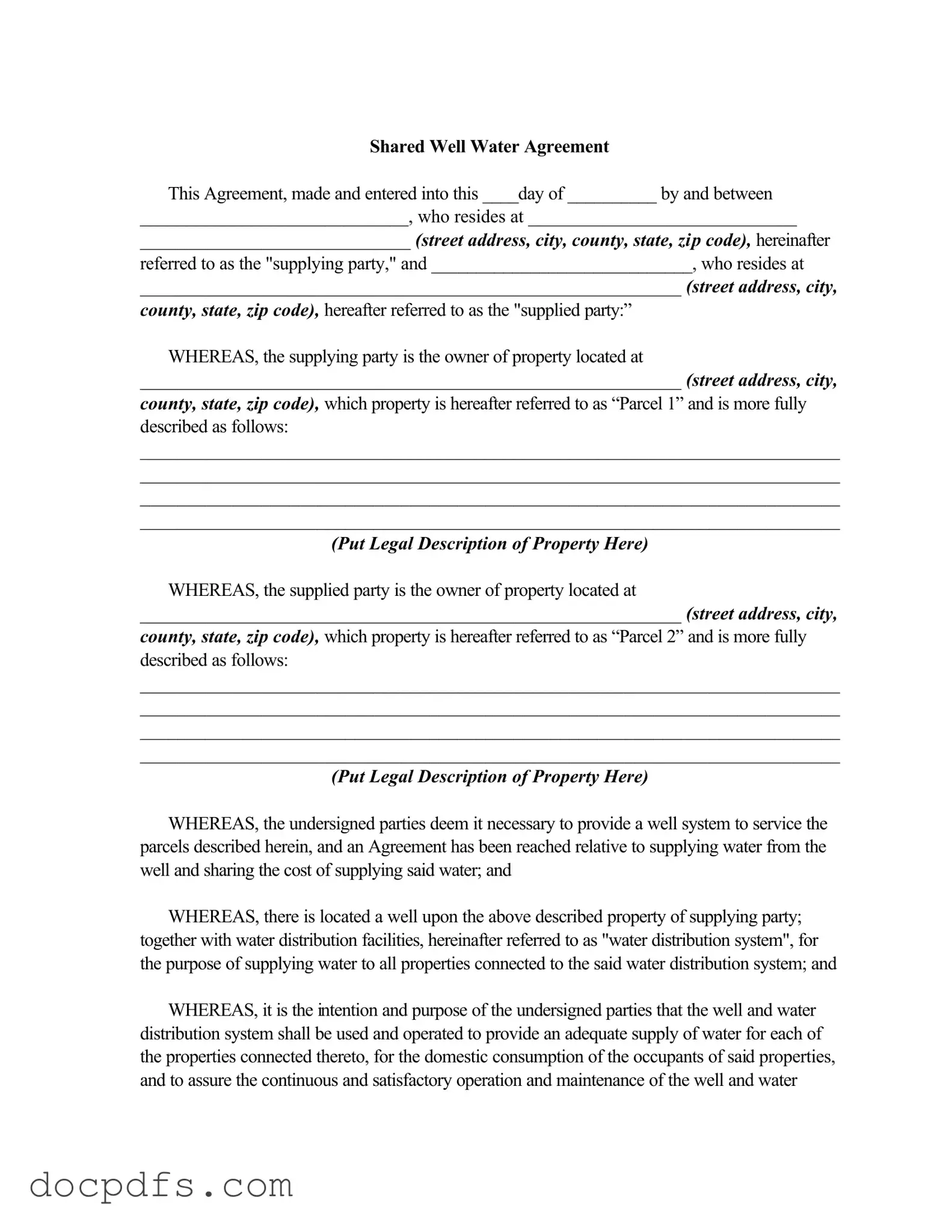What is a Shared Well Agreement?
A Shared Well Agreement is a legal document that outlines the rights and responsibilities of parties sharing a well and water distribution system. It ensures that all parties understand how water will be supplied, the costs involved, and the maintenance obligations for the well system.
Who are the parties involved in a Shared Well Agreement?
The parties involved are typically the "supplying party," who owns the property where the well is located, and the "supplied party," who uses the water from that well. Each party must provide their property details, including addresses and legal descriptions.
What are the key terms of the agreement?
The agreement includes several important terms, such as:
-
The right to draw water from the well for domestic use.
-
Annual fees and shared expenses for maintenance and operation.
-
Responsibilities for repairs and maintenance of water pipes.
-
Conditions under which the agreement can be terminated.
What fees are involved in a Shared Well Agreement?
The supplied party is required to pay an annual fee for using the well, as well as a proportionate share of maintenance costs. These costs include electricity for pumping and any necessary repairs. Payment deadlines are specified in the agreement to ensure timely contributions.
What happens if the well becomes contaminated?
If the well becomes contaminated or no longer supplies adequate water, the rights and obligations outlined in the agreement will terminate. The parties will then have the option to connect to an alternative water source, with a reasonable time allowed for this transition.
Can landscaping be installed near the well?
No party may install landscaping or improvements that would impair the use of the easements associated with the well. This ensures that access for maintenance and operation is not obstructed.
How are disputes resolved under the agreement?
Any disputes arising from the Shared Well Agreement must be resolved through binding arbitration. Each party selects an arbitrator, and those arbitrators will choose a third. This process is governed by the rules of the American Arbitration Association.
How can a party terminate their participation in the agreement?
A party wishing to terminate their participation must file a written statement of termination with the appropriate county office. After termination, the party must disconnect their lateral connection from the well system and will no longer be responsible for maintenance costs.
